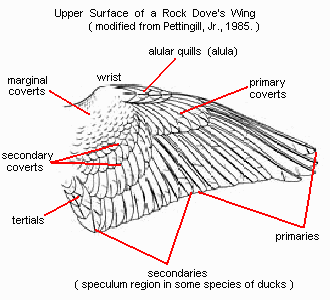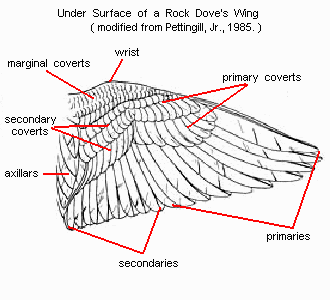Another of Nick Siders articles.
A Closer Look at the Pigeon
Birds have a lightweight skeleton made of mostly thin and hollow bones. The keel-shaped sternum (breastbone) is where the powerful flight muscles attach to the body. Birds have a smaller total number of bones than mammals or reptiles. This is because many of their bones have fused together making the skeleton more rigid. Birds also have more neck (cervical) vertebrae than many other animals; most have 13 to 25 of these very flexible neck vertebrae (this helps them groom their feathers). Birds are the only vertebrate animals to have a fused collarbone called the furcula or wishbone and a keeled breastbone. Below is a diagram of a typical bird skeleton.

1) Skull 2) Cervical Vertebrae 3) Humerus 4) Second digit 5) Metacarpals 6) Fourth digit 7) Third Digit 8) Radius 9) Ulna 10) Scapula 11) Synsacrum 12) Pygostyle 13) Ischium 14) Ilium 15) Pubis 16) Pelvic girdle 17) Uncinate process 18) Femur 19) Halux 20) Digits 21) Tarsometatarsus 22) Tibiotarsus 23) Keeled sternum 24) Coracoid 25) Furcula (or wishbone)






